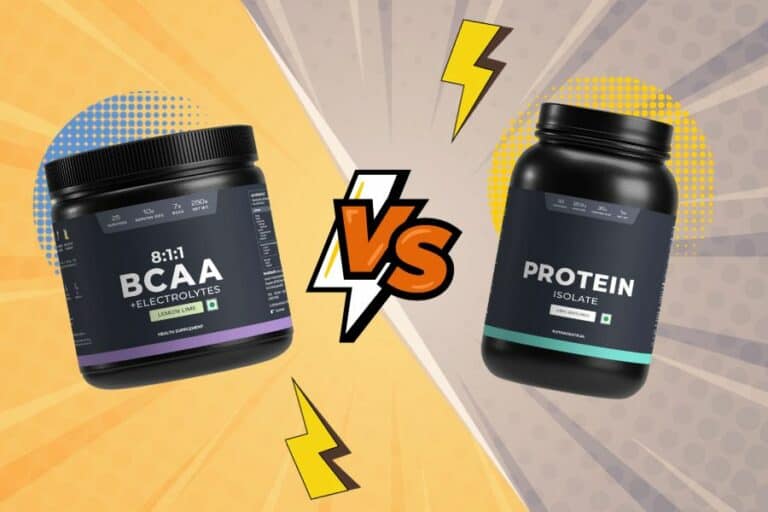How to Get Vitamin D from Sun Without Getting Sunburnt

Most Americans are vitamin D deficient. Recent research suggests that about 42% of the U.S. population lacks vitamin D in their bodies. This has engendered growing health concerns related to joint problems, heart disease, and cancer.
To beat such risks, one must spend enough time in the sun for the body to produce vitamin D and combat vitamin d deficiency-related diseases. However, too much exposure to the sun’s UV rays increases our risk of developing skin cancer.
This guide tells you how to get vitamin D from sunlight without excessive exposure. It also discusses other sources of vitamin D, the ideal time when you should be outdoors, and so much more.
What is Vitamin D?
Vitamin D is a micronutrient needed for the optimal health of an individual. It is needed to build and maintain healthy bones and muscles. This is because it helps to regulate calcium in the body, which is the main component of bone structure.
Mounting evidence [1]National Library of Medicine: The Role of Vitamin D in Brain Health says that vitamin D also has antioxidant and neuroprotective properties to support optimal brain cell function.
Vitamin D is found in certain foods and drinks. However, it is mainly synthesized in the human body upon exposure to the UV rays of the sun. Sunlight is the primary source of this vitamin.
How is Vitamin D Processed in the Body?
The actual phenomenon of vitamin D synthesis starts when you spend enough time in the sun, and your skin takes in the invisible ultraviolet B (UVB) rays of the sun. Some of the body organs, like the liver and kidneys, then work in synergy to produce a bioavailable form of vitamin D.
If you do not get enough vitamin D from sunlight, you can try other food sources and even vitamin D supplements.
Listed below is the recommended daily allowance (RDA) for Vitamin D according to age and gender. Ideally, all individuals should try to get the recommended levels of Vitamin D through natural or fortified sources (refer list for sources of vitamin D). Take the help of a doctor or nutritionist to calculate how much vitamin D you have been getting, and how much more you need of it.
| Age | Male | Female | ||
| 0-12 months | 10 mcg(400 IU) | 10 mcg(400 IU) | ||
| 1–13 years | 15 mcg(600 IU) | 15 mcg(600 IU) | ||
| 14–18 years | 15 mcg(600 IU) | 15 mcg(600 IU) | ||
| 19–50 years | 15 mcg(600 IU) | 15 mcg(600 IU) (All including Pregnant and Lactating) | ||
| 51–70 years | 15 mcg(600 IU) | 15 mcg(600 IU) | ||
| >70 years | 20 mcg(800 IU) | 20 mcg(800 IU) |
How to Get Vitamin D from Sun Without Harming your Skin?
Too much exposure to the sun can increase the risk of sunburn and skin cancers. Therefore, it is important to ensure that you do not harm your skin or health in your attempts to get this crucial vitamin.
Unfortunately, unprotected sun exposure can lead to skin cancer. The WHO and other researchers [3]Skin Cancer Foundation: Sun Protection and Vitamin D have stated that solar UV rays are linked to nonmelanoma skin cancers and premature skin aging. Apart from this, UV radiation can harm the eyes and can cause eyelid cancers and cataracts.
It is possible to get a healthy dose of vitamin D without hurting the health and glow of your skin. Get your daily RDA of vitamin D from the sunlight without harming your skin or health by following these tips:
- Spend time in the sun during the recommended hours. The American Academy of Dermatology recommends that people get 10-15 minutes of sun exposure on their face, arms, legs, or back two to three times a week. However, this exposure should not result in a change in skin color.
- Wear sunscreen with an SPF of 30 or higher to protect your skin from harmful UV rays. Be sure to reapply sunscreen every two hours or more often if you are swimming or sweating.
- Choose a sunscreen that provides broad-spectrum protection against both UVA and UVB rays. UVA rays can cause premature skin aging, while UVB rays can cause sunburn. Look for a sunscreen with an SPF of 30 or higher that provides broad-spectrum protection.
- Avoid sun exposure during the peak hours of 10 AM to 4 PM, when the sun’s rays are the strongest. If you must be in the sun during these hours, seek shade whenever possible.
- Wear protective clothing, such as a long-sleeved shirt, pants, a wide-brimmed hat, and sunglasses.
- Another trick is to get it from food sources, vitamin d fortified foods, or supplements. Rely on food sources, such as fatty fish, eggs, fortified milk, and cereal. Vitamin d supplements are also an option, but be sure to talk to your doctor before taking one.
Meanwhile, a lot of people do not opt for sun protection as they have the notion that they might not get enough vitamin D after applying sunscreen. So, we recommend following some measures to protect your skin while you are directly under the sun. Some of these measures include:
- Wearing SPF 15 or higher
- Reapplying sunscreen every 2-3 hours
- Wearing a hat and sunglasses
For babies and children, it’s important to note that they should not be kept under direct strong sun rays.
Alternative Sources of Vitamin D for People who can’t get Sun Exposure
Now it’s clear that spending time under direct sunlight is crucial for optimal levels of vitamin D production in the body. Unfortunately, some people can’t get enough of the vitamin through sun exposure. In such cases, their body has to resort to alternative sources for synthesizing vitamin D. Experts [4]National Health Service: Vitamin D recommend the following vitamin D food sources to children and adults:
You can also get your daily requirement of vitamin D from fortified foods and drinks. Some of the foods & drinks with added vitamin D are:
| Natural source | Fortified source |
| Red meat | Fat spreads |
| Egg yolks | Fortified cereals |
| Cheese | Infant formula milk |
| Mushrooms | Dietary supplements |
| Organ meats like liver | Fortified orange juice |
| Cereals and oatmeal | Non-dairy products such as almond milk and soy milk |
| Fatty fish (salmon, sardines, and herring) | Fortified cow’s milk and dairy products like yogurt |
How Much Sun Exposure is Needed to Provide Adequate Vitamin D?
Several factors affect your body’s level of absorption of sunlight to make vitamin D, such as latitude, season, skin type, etc. Depending on these factors, your body’s vitamin D production can decrease or even be absent, especially during the winter season. Some experts also believe that sunscreen (although crucial to prevent skin cancer) can lower the production of the vitamin.
However, one study [5]National Library of Medicine: Sun and sun beds: inducers of vitamin D and skin cancer has indicated that 30 minutes of exposure to the sun during midday summer in Oslo is equivalent to intaking 10,000–20,000 IU of vitamin D (given the general recommended dose is 600 IU).
To maintain healthy vitamin D levels, one should aim to get 10 to 30 minutes of midday sunlight 3-4 times a week. Again, people with darker skin or those not near the equator should spend more time under direct sunlight to meet optimal vitamin D levels.
Most people can get adequate amounts of vitamin D from sunlight by being under the summer sun daily for specific durations with their hands, legs, and forearms uncovered. But make sure to protect your skin with broad-spectrum sunscreen to avoid risks of skin cancers or sunburn.
You can also cover up to provide subtle protection to your skin and eyes. People with dark skin should spend a bit longer to let their bodies produce equal amounts of vitamin D as Caucasian people.
Note: During winter months, people need to rely on vitamin D food sources and supplements to maintain optimal levels of the vitamin in their bodies.
What are the benefits of Vitamin D?
As aforementioned, the ‘sunshine’ vitamin D regulates the amount of calcium in the body. Lack of vitamin D can lead to calcium deficiency which can, in turn, cause bone deformities such as rickets in kids and joint problems in adults.
Scientific evidence [6]PubMed.gov: Prevalence and correlates of vitamin D deficiency in US adults suggests that vitamin D deficiency is also linked to many other chronic diseases, such as cancer and heart disease. So, make an effort to get enough vitamin D from sunlight every day. For now, if you are wondering why vitamin D is important, here is a rundown of some other benefits of the micronutrient.
Vitamin D Helps to Fight Certain Diseases
Vitamin D is known to help fight certain diseases, including heart disease, rheumatoid arthritis, and Type 2 diabetes. A scientific study [7]National Library of Medicine: Vitamin D’s Effect on Immune Function claims that low levels of vitamin D are linked to the increased risk of autoimmune diseases, such as inflammatory bowel disease, rheumatoid arthritis, and diabetes.
People who do not get enough vitamin D from the sun or eat vitamin D-rich foods are also at an increased risk of heart diseases, including stroke and hypertension.
Vitamin D can Aid Weight Loss
If you are trying to shed extra fat from your body, the vitamin D can help you. One scientific study [8]National Library of Medicine: Effect of vitamin D supplementation along with weight loss diet on meta-inflammation and fat mass in obese subjects with vitamin D deficiency: A double-blind … Continue reading has found that people who are overweight tend to lose more fat mass by complementing vitamin D supplements with their weight loss diet plan as compared to those who rely only on diet.
Vitamin D Can Lower Depression and Boost Mood
Bad moods and depression are common these days. Scientific evidence says that vitamin D can regulate mood and help lower the risk of depression. One study [9]National Library of Medicine: Fibromyalgia Symptom Severity and Psychosocial Outcomes in Fibromyalgia Patients with Hypovitaminosis D: A Prospective Questionnaire Study confirms that low levels of the nutrient in one’s body can engender symptoms of anxiety and depression. So, to reduce these negative emotions, one must get sufficient vitamin D either from sunlight or through diet.
Conclusion
Regular sun exposure is one of the most efficient ways to get enough vitamin D. It is recommended to spend 10-30 minutes under the sunlight during midday summers multiple times a week. However, the exact time you should spend in the sun will depend on your skin, time of the day, season, latitude, and other factors.
For instance – people with dark skin or those who live far away from the equator need to spend more time outdoors. They should also opt for non-sunlight vitamin D sources to prevent health concerns associated with low levels of vitamin D.
To get enough vitamin D from the sunlight without damaging your skin and eyes, we recommend that you wear a broad spectrum SPF. Reapply it every one or two hours, especially if you are sweating or swimming. Also, wear sunglasses, hats, and other protective gear to combat the effects of cumulative sun damage.
References
| ↑1 | National Library of Medicine: The Role of Vitamin D in Brain Health |
|---|---|
| ↑2 | National Institutes of Health: Vitamin D |
| ↑3 | Skin Cancer Foundation: Sun Protection and Vitamin D |
| ↑4 | National Health Service: Vitamin D |
| ↑5 | National Library of Medicine: Sun and sun beds: inducers of vitamin D and skin cancer |
| ↑6 | PubMed.gov: Prevalence and correlates of vitamin D deficiency in US adults |
| ↑7 | National Library of Medicine: Vitamin D’s Effect on Immune Function |
| ↑8 | National Library of Medicine: Effect of vitamin D supplementation along with weight loss diet on meta-inflammation and fat mass in obese subjects with vitamin D deficiency: A double-blind placebo-controlled randomized clinical trial |
| ↑9 | National Library of Medicine: Fibromyalgia Symptom Severity and Psychosocial Outcomes in Fibromyalgia Patients with Hypovitaminosis D: A Prospective Questionnaire Study |







